Theory of Operation
Theory of Operation explains how something works. Evans Races combines several different mechanisms in order to make the horses move.
Another page shows some of the details of the operation, such as what happens when the horses reach the finish line, how the horses are returned to the start line, and how the piano roll reverses direction when it reaches the end of the roll.
How the valves sense the leak and operate a bellows is also covered.
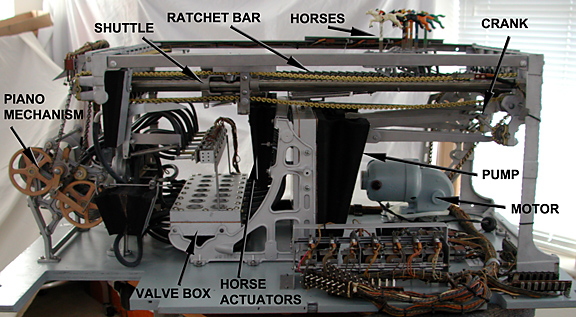
How the Horses Move
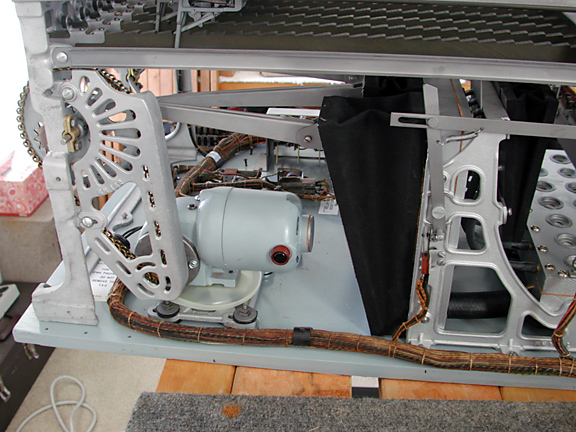
The motor sits on a vibration isolated mount with a coffee can plastic lid to catch any oil drops. Inside the motor housing is a worm gear reduction drive. The chain guard protects the ladder chain that drives sprocket. The motor only runs long enough to make the horses run to the finish line and then reset them immediately to the start line.

The upper sprocket gear turns the crank. The pump bellows are connected to the crank with push rods. The four pump bellows are out of phase and so work to provide a continues vacuum in the manifold and valve box. The ornate casting on the left supports the pump bellows and the manifold. It also supports the horse actuating bellows.
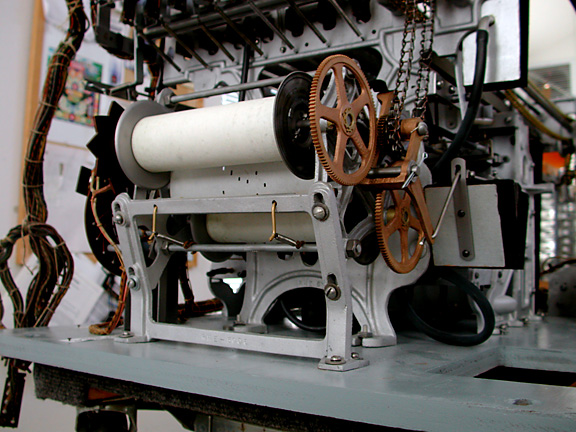
The piano roll has a series of perforations. These holes tell the game which horse to move and when the roll has reached either end. The paper of the roll is pulled past a tracker bar which has tubes running to the valve box. Most of the time the tracker bar is covered with paper. Occasionally, when one of the perforations passes over the tracker bar, air is allowed to leak into the tube.
When the paper roll reaches the end, a perforation tells the mechanism to reverse the direction of the paper. The bellows on the right of the picture are attached to the gears that spool the paper and by moving the driving gear, the direction of the paper can be reversed.
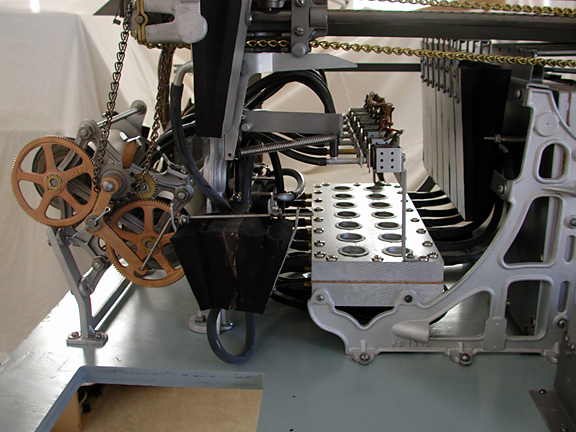
The small leak caused by the perforation in the paper roll is fed to the valve box. Here each horse and each direction of the paper roll has its own valve. The valves and how they work are described here. As a valve opens, a strong vacuum is allowed to suck the air out of its bellow, moving one horse or reversing the direction of the paper roll. The row of bellows in the upper right are used to move the ratchet bar for each horse. The two bellows in the center are used to reverse the direction of the paper roll.
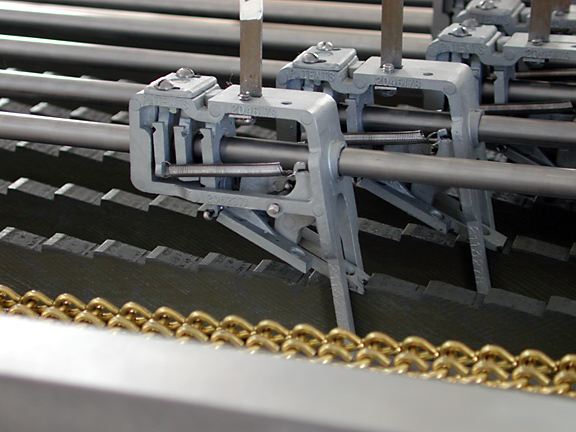
The ratchet bar is moved to the left and back again each time the bellows for that bar collapses due to vacuum being fed to it from the valve box. The complicated plates, three in a row, were invented by Clarence W. Musser, and are used to prevent the horse carriage from moving backwards as the ratchet bar returns to its original position.
The reset bar lefts the ratchet and returns all the horse carriages to the start line.

This is the original patent drawing for Paces Races. The major components are color coded.
red - the odds wheel that spins during the race and helps determine the payout
green - the electric motor that drives the chains and pump
blue - the four bellows that pump the air out of the game
brown - the piano roll mechanism
light green - the piano roll reversing bellows
orange - the valve box
yellow - the actuating bellows for the horses
blue/green - the ratchet bar that moves the horses
lime green - the horse
purple- the reset carriage that returns the horses to the start line
A separate page shows how the pneumatic valves work.
